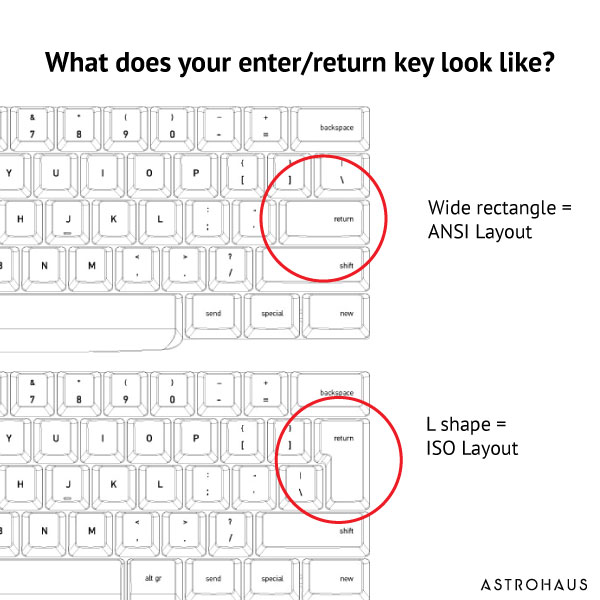Today, I wanted to mess around with something a little different – keyboards. More specifically, the whole ISO versus ANSI keyboard layout thing. You see these terms thrown around, but what do they actually mean? Time to find out!
Getting Started
First off, I needed to get a good look at these different layouts. So, I went online and started searching for images of ISO and ANSI keyboards. Basically just to see with my own eyes what sets them apart.

Spotting the Differences
After a bit of looking, the differences became pretty clear. It all boils down to a few key areas:
- The “Enter” Key: This was the most obvious one. ANSI keyboards have that rectangular “Enter” key, while ISO has this big, fat, upside-down L-shaped “Enter” key.
- The Left “Shift” Key: On ANSI, it’s a long rectangle. On ISO, it’s much shorter to make room for an extra key.
- That Extra Key: ISO has an extra key next to the left “Shift”. On my keyboard at least, it has the less than and greater than symbols.
- The Top Row: There were some minor differences in the symbols on the number keys, but that’s probably going to vary depending on your specific language settings.
Trying it Out
Now, I happen to have an ISO keyboard. So I figured, why not try to switch it to ANSI, just to see what happens? I found some basic instructions online for changing my keyboard layout settings on my computer. I had to add ANSI as an option first, and then I could select it as my default layout.
The Result
Honestly? It felt really weird! My muscle memory was all messed up. I kept hitting the wrong keys, especially when trying to use “Enter” or “Shift”. It’s amazing how ingrained those key positions are.
Switching Back
After a good laugh, I switched back to my trusty ISO layout. It just felt like coming home. It really goes to show how much we adapt to these little details without even realizing it.
So, there you have it. My little adventure into the world of ISO and ANSI keyboards. It might seem like a small thing, but it’s a fun reminder of how diverse even the simplest tools can be!